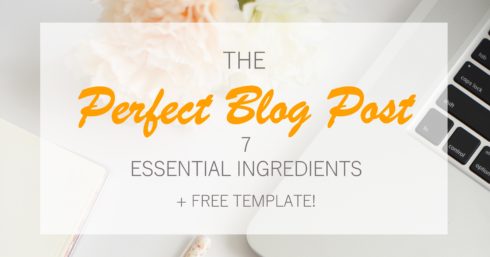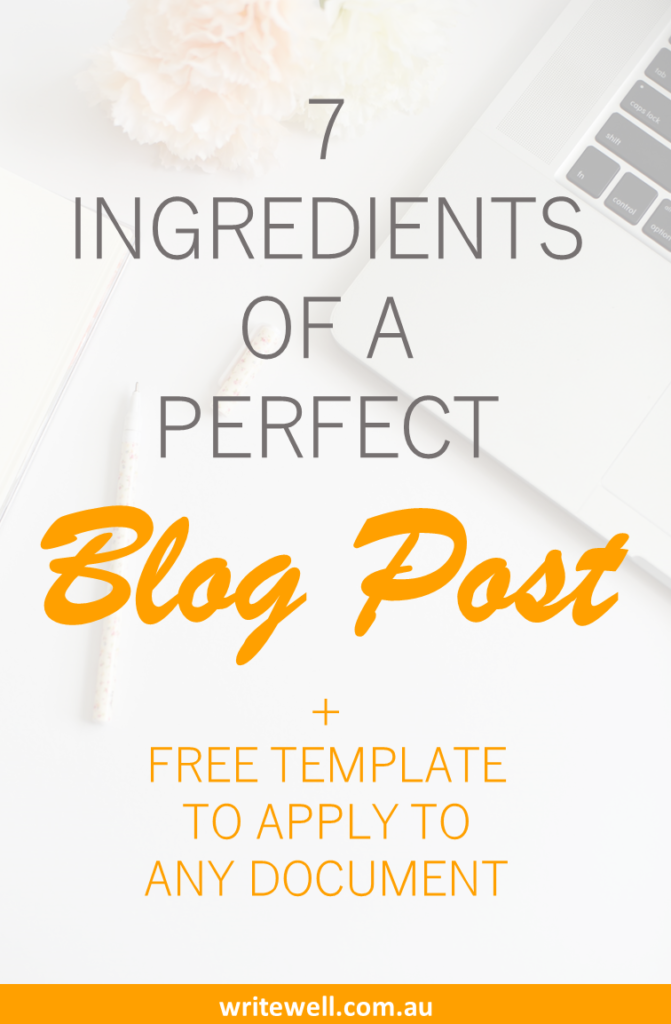Transform your blog – and make it easier to write.
Do you dread your daily writing tasks because you just don’t know where to begin? You’re not alone. Writing is difficult. And it’s especially difficult without a plan – regardless of whether you’re writing a blog, a tricky email, a briefing paper or a report.
A plan gives you a solid structure, which makes your blog easier to read – and, in turn, easier for your reader to do what you ask of them. It also makes the writing part easier.
Outlined below and in the downloadable template are the essential ingredients of a great blog post – your plan.
A few tweaks is all it takes to make it relevant for almost any document.
If you need help with the actual writing process, watch this short video for three simple – but powerful – tricks to give your writing more impact.
Anatomy of the perfect blog post
1. Title
Your blog post title is what gets people clicking through to your post. The title needs to:
- Grab attention
- Explain what the post is about
- Persuade your reader to click through
It may be short, but the title is one of the most difficult and creative parts of the writing process. It certainly doesn’t need to be written first – often it’s easier to save it until last, using your body content as inspiration.
Brainstorm ideas and SEO keywords (what will your reader be searching for in Google?), write some random words, then mix and match until they sound just right. Beware: despite being just a few words, the title can take lots of time and energy.
2. URL
Like your blog post title, the URL needs to draw your reader in. It also needs to contain your keywords for SEO.
3. Intro
Your introduction usually appears under the blog post title – and your reader will see it before they click through. So it needs to be short and powerful.
This is where you make your promise – tell your reader what valuable information they’re going to get inside the article. It needs to be punchy and compelling.
4. Opening statement
Although it comes after your introduction, your opening statement is still working to hook your reader in – convince them to keep on reading. So use similar tactics to your title and intro, and keep it sharp and powerful. Try asking a question, sparking intrigue, making it a little controversial.
5. Main body
This is not one, single body of text. Most readers don’t have the time to ‘work hard’ to read your post, so presentation and readability (scan-ability) are paramount to keeping them engaged. Split the text and keep it concise – make it easy to read with plenty of white space. Use:
- Subheadings
- Bullet points
- Short sentences and paragraphs
Ensure your article is informative and educational – offer achievable steps that solve a problem. What does your reader need to know?
How long should it be? Longer articles (upwards of 1000-1500 words) are currently favoured by search engines. This doesn’t mean you should fill it with waffle. Clarity should reign.
6. Image
Not only can a graphic complement your written content, it also breaks up the text and helps with SEO. Make sure you include SEO-friendly file names and alt text.
7. Call-to-action
Why are you writing your blog post? What do you want to achieve? The end goal is probably to make more sales; in the interim, you want to keep your reader engaged with your brand – by leaving a comment or signing up for your newsletter.
Your call-to-action tells your reader what to do next – and how. You need to make this easy, so include your email address, phone number or link, even if you’ve done this elsewhere in the post.
There you have it: seven essential ingredients for a killer blog post. You don’t need to tackle them in this order. Often, a solid draft can make writing your headline or opening statement so much easier.
And remember, the tips and techniques you’ve just read can be applied to most writing tasks.
Click to download the template!
What next?
- Review the article for clarity and flow – there’s no such thing as a perfect first draft.
- Proofread it for spelling, grammar and working links.
- Ensure it’s SEO-friendly.
- Add social sharing buttons.
Which documents do you plan before you write? And which ones do you have trouble structuring? Leave a comment below!
Want to produce better writing?
Join the WriteWell community and receive valuable resources that will improve your writing, including tips, cheat sheets and more. Here’s a taster:
- Write less, say more: Make more impact by writing fewer words
- Write with purpose: 5 ways to strategically target your reader
- Captivate your readers: How to write compelling content
- The power of simplicity: How to keep even the most complex writing task simple
Receive more writing tips – free into your inbox. Join here!
Share the love
Like this writing tip? Share it with your friends and colleagues.



